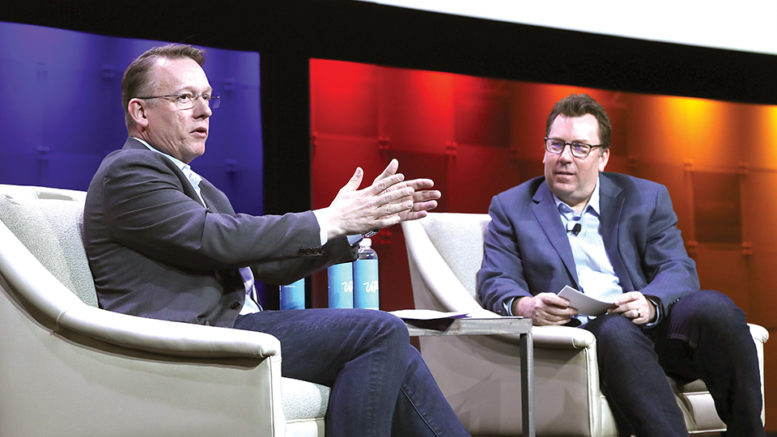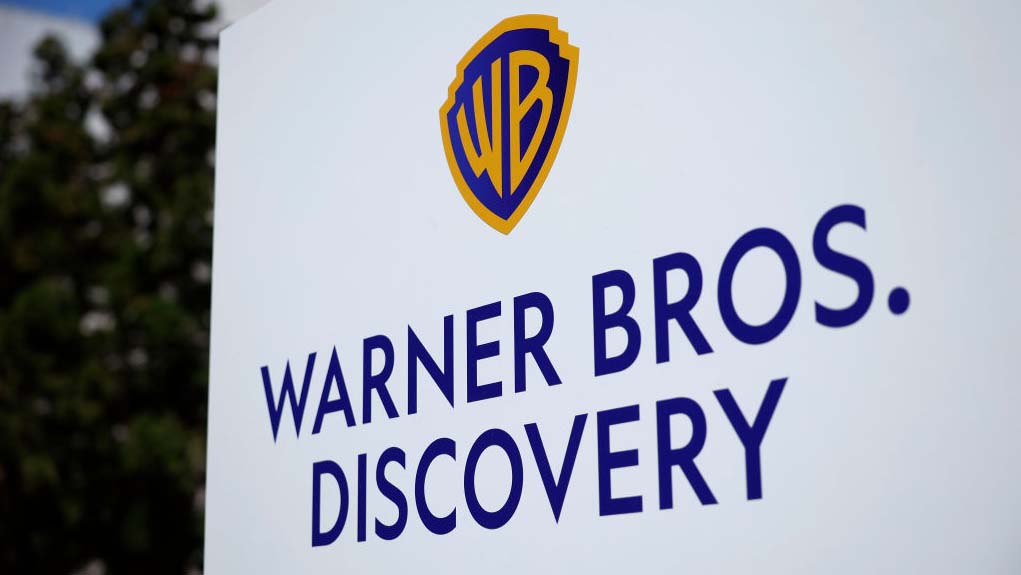LAS VEGAS—Media companies must adopt “new mindsets” to navigate the steady and fast-paced succession of challenges they face, said John Honeycutt, vice president of Telecommunications, Media & Entertainment at Google Cloud.

Leading “The Evolution of the Cloud” session April 9 on the NAB Show Main Stage, Honeycutt, who recently joined Google after spending more than 25 years as a broadcaster with FOX and Discovery, said the television industry has been a bit stagnant over 20 years in its technology evolution, failing to deploy solutions that keep pace with where the business is headed.
“We continue to operate on linear supply chains for nonlinear content distribution,” he said.
A problem facing many media companies is overcoming the fragmented business system touchpoints that an asset must go through before it can be distributed to viewers.
“In short, it’s complicated, it’s slow, it’s manual and it’s inefficient. And it has multiple failure points,” he said. Media processes based on legacy infrastructure do not offer the speed and agility required to enable that growth mindset.
“Many companies know they have to make this transition. And this transition can only be enabled by beginning the move to the cloud,” he said. However, fully leveraging the strengths of the cloud involves more than simply shifting workloads from an on-premise data center to the public cloud. “It is an easy way to get started … but only a first step,” he said.
What’s needed is continued innovation to re-architect media workflows and infrastructures in ways that are native to the cloud. Google has made a major investment in building out infrastructure over the past few years with 19 cloud regions and four more on the way, and it has deployed hundreds of thousands of miles of fiber optic cable, including 13 under-sea stretches, to ensure fast, secure transport of data, he said.
The professional video industry's #1 source for news, trends and product and tech information. Sign up below.
“This is the backbone upon which media companies can build a truly global business,” said Honeycutt.
He was joined on stage by Phil Wiser, chief technology officer of CBS, for a lively exchange about the cloud. At big media companies, a series of separate silos, including those for IT, broadcast operations, engineering and digital, have grown up over the years, said Wiser, who took on his top tech role at CBS at the end of last August. Upon arriving at the network, Wiser said, he advised CBS to identify “a true North Star” to drive thinking on what a media company should be.
“A future media company does not look like one that has these pockets of technology that are distinct as everything converges to IP,” said Wiser. While viewers are consuming content in droves on their mobile devices, a complete strategy is much more than simply about how best to stream video.
“It goes all the way back into the data-driven decision-making that’s back in the production process, the distribution process,” said Wiser.
Wiser has been pleasantly surprised by the response among various stakeholders at CBS to the cloud. While he anticipated some resistance, the opposite has been the case. “I think there is a real awareness in the broadcast operations side of the business that this transition is important. They are feeling it, and they want to be a part of it.”
Production and distribution of Super Bowl LIII served as a catalyzing event to pull together the various teams within the company and tackle how to use the cloud to enable delivery of the game, he said. Wiser also cautioned media companies to be “precise and thoughtful” about their move to the cloud and to find satisfaction in small initial steps that build a feeling of accomplishment.
Phil Kurz is a contributing editor to TV Tech. He has written about TV and video technology for more than 30 years and served as editor of three leading industry magazines. He earned a Bachelor of Journalism and a Master’s Degree in Journalism from the University of Missouri-Columbia School of Journalism.

